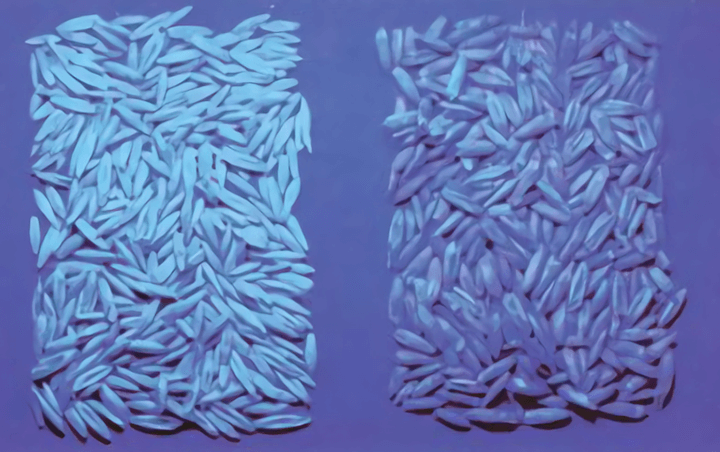Genetic purity testing refers to the analysis for detecting the existence of transgenic events or undesired genetic varieties in seeds. To maintain crop sustainability, a high level of genetic purity in crop varieties must be achieved and maintained in different environmental conditions and over generations. Thus, reliable seed genetic purity testing is critical for seed producers and plant breeders.
Lifeasible is a leading plant biotechnology company featured in plant genetic engineering and plant breeding. We provide our customers with a variety of methods for genetic purity testing to accommodate diverse research goals, including:
 Figure 1. The peroxidase test for soybean. Peroxidase positive (left two rows) and peroxidase negative (right two rows) seeds are displayed (Elias et al., 2012).
Figure 1. The peroxidase test for soybean. Peroxidase positive (left two rows) and peroxidase negative (right two rows) seeds are displayed (Elias et al., 2012).
 Figure 2. The fluorescence test for oats: Left: white (fluorescent) oats; right: yellow (nonfluorescent) oats (Elias et al., 2012).
Figure 2. The fluorescence test for oats: Left: white (fluorescent) oats; right: yellow (nonfluorescent) oats (Elias et al., 2012).
 Figure 3. The principle of ELISA (Elias et al., 2012).
Figure 3. The principle of ELISA (Elias et al., 2012).
Lifeasible utilizes sensitive, sophisticated, and powerful technologies to detect the presence of transgenic events and crop varieties. With superior expertise and high-throughput capability, we are able to offer genetic purity test services with high quality, short turnaround at competitive rates.
Reference
Lifeasible has established a one-stop service platform for plants. In addition to obtaining customized solutions for plant genetic engineering, customers can also conduct follow-up analysis and research on plants through our analysis platform. The analytical services we provide include but are not limited to the following:
Get Latest Lifeasible News and Updates Directly to Your Inbox
Adaptive Evolutionary Mechanism of Plants
February 28, 2025
Unraveling Cotton Development: Insights from Multi-Omics Studies
February 27, 2025